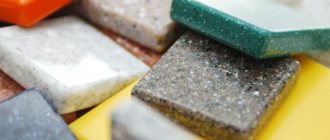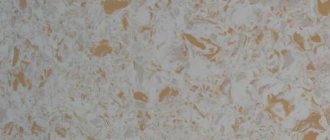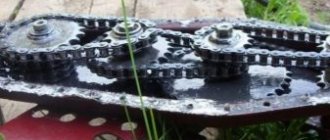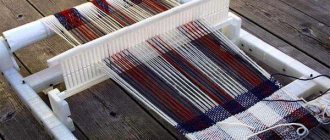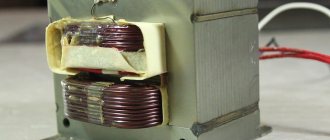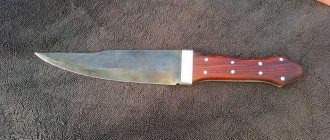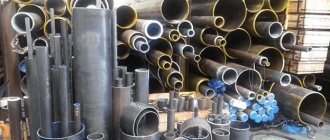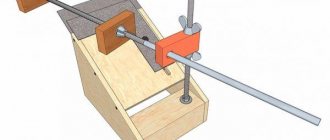For a number of reasons, natural materials for construction and finishing work often turn out to be unacceptable. Therefore, new technologies are being developed to produce alternative solutions that allow design projects to be realized. Let's consider one of them - liquid stone. Let's get acquainted with the general characteristics of the material, how it differs from its acrylic counterpart and how you can decorate various structures.
Using liquid stone in the kitchen interior Source stoneleader.ru
What is liquid granite?
Externally, liquid granite is practically no different from natural stone, but when you touch it, you will notice that it is smoother, warmer, and very pleasant to the touch. By origin, it is an artificial polymer, which contains up to 80% stone chips and about 20% polyester resin with a hardener.
Thanks to the liquid form, a wide variety of products can be cast from such material, which, after hardening, will be no less beautiful and luxurious in appearance than natural ones. In addition, liquid stone is easier to process and is more convenient to use and operate.
Products made from liquid granite are safe and environmentally friendly. As polymerization proceeds, various chemical reactions occur in the mixture, and no harmful elements remain in the product.
Sink made of liquid granite
The composition of liquid stone can include crumbs with a fraction of up to 2-3 mm of other types of minerals - marble, quartz. This will help make the appearance of the finished products more original and attractive.
Advice! To give liquid granite the highest strength, polyester resin can be replaced with polyurethane glue.
Feasibility study of the project *
The material consumption per 1 m2 of cladding of a product with a thickness of 3 mm will be approximately 6 kg of the finished mixture, which corresponds to 3.6 kg of gelcoat, 2.34 kg of filler and 0.06 kg of hardener.
Thus, to get started you will need:
| Name | Packaging volume, kg | price, rub. | Required amount of material | Total costs, rub. |
| Gelcoat | 25 | 9 250 | 2 | 18 500 |
| Pigment for painting gelcoat in 14 colors | 1 | 1 000 | 14 | 14 000 |
| Liquid granite filler in the most popular colors with minimal granule sizes | 1 | 320 | 30 | 9 600 |
| Liquid granite filler in the most popular colors with medium-sized granules | 1 | 320 | 18 | 5 760 |
| Liquid granite filler in the most popular colors with large granules | 1 | 320 | 18 | 5 760 |
| Liquid granite filler in the most popular colors with granules of different sizes and golden inclusions | 1 | 320 | 10 | 3 200 |
| Liquid granite filler in the most popular colors with granules of different sizes | 1 | 320 | 18 | 5 760 |
| Hardener | 5 | 1 850 | 2 | 3 700 |
| Gel coat solvent | 1 | 315 | 2 | 630 |
| A solution of paraffin in styrene to facilitate sanding of finished products | 15 | 5 700 | 1 | 5 700 |
| Topcoat for a glossy finish | 20 | 10 200 | 1 | 10 200 |
| Pre-accelerated glaze | 1 | 300 | 2 | 600 |
| Release wax | 0,8 | 800 | 10 | 8 000 |
| Acetone | 8,75 | 870 | 1 | 870 |
| Polishing paste for removing deep scratches | 1 | 2 200 | 1 | 2 200 |
| Polishing paste for removing small scratches | 1 | 2 200 | 1 | 2 200 |
| Lapping polishing paste | 1 | 2 200 | 1 | 2 200 |
| Total material costs: | 98 880 |
Where is liquid granite used?
Due to its reliability, wear resistance and hygiene, artificial granite is especially popular in hotels and restaurants, clinics and laboratories, and in public areas. It looks no less beautiful in the interior of residential premises, country houses, dachas, and summer buildings.
The material can take any shape, even the most complex, and has a seamless surface, so it is suitable for casting spherical objects - arches, columns, balls. It is used to make stylish countertops, window sills, sinks, sanitary ware, pieces of furniture or individual parts, decorative elements and even facade tiles.
Liquid stone countertops
Liquid granite can be poured or sprayed onto the following base materials:
- ceramics;
- tree;
- metal;
- glass;
- stone;
- porcelain;
- Chipboard and fibreboard.
Stone casting
Later, while walking around St. Petersburg, mainly in the area of Nevsky Prospekt, I found out that stone casting technology was used in many construction projects.
That is, it was quite widespread, and therefore cheap. At the same time, the foundations of many houses, pedestals of monuments, and many elements of stone embankments and bridges were cast using this technology. Stone foundry technology
(
stone casting
,
geopolymer concrete
, indistinguishable from real stone, etc.) - a process of technogenic influence on stone unknown to science, as a result of which the state of aggregation changes from solid to liquid and it can be poured into formwork, giving the material bizarre shapes of columns and obelisks , flights of stairs, statues and other architectural delights. Another optional option, closer to reality, is that crushed pieces of natural stone are used in casting and glued together with a certain binder like concrete. In any case, according to adherents of this theory, the original material turns after hardening into a substance indistinguishable (even by petrography/lithology) in texture and texture from natural stone.
The “betonoids” see the benefits of this method of making artifacts in the fact that there is no need to move huge masses of stone blanks using steamy steam using the “push-pull” method and you can gradually, without straining, cast the required object on the spot, no matter how huge it may be; no need to chisel granite with copper chisels; obtaining automatic polishing of the surface of the artifact after casting and removal of formwork.
Manufacturers
- GRANITO-FARFALLA is a company engaged in the production of countertops and window sills made of liquid granite. The quality of products is ensured by materials and equipment from world famous manufacturers. The company constantly strives to improve technology and improve technical performance.
- "GRANIT" is a company that produces the decorative filler GraniStone for the production of liquid stone, and the ready-to-use liquid composition AquaGranit, made from polyester isophthalic resin and acrylic.
- “Liquid Granite” is a company producing countertops, window sills made of artificial stone, wall panels and door trims made of granite.
- MASTERCOMPOSIT is a manufacturer of coatings and artificial stone products using GraniStone technology.
- ColGran - the company produces liquid polyester stone in 150 colors.
- Hi-Macs - manufacturer - LG Corporation produces a stone consisting of 70% natural materials, the base is acrylic resin.
Read about the Fusion style in the kitchen interior at the link.
Products made from liquid stone have a beautiful, attractive appearance, are varied in color and have a texture similar to seamless marble. They go perfectly with any finishing materials. Quality, safety and durability complete the list of advantages of this material.
Advantages and disadvantages of the material
Liquid granite allows you to achieve a complete imitation of products made from natural stone, and working with it is much easier. The composite has many other advantages:
- Resistance to aggressive factors. The material does not delaminate, does not soften and is not destroyed under the influence of alkalis and acids, household chemicals. This allows it to be actively used in the design of bathrooms and kitchens. It is not afraid of ultraviolet rays or changes in air temperature.
- Pore-free and hygienic. Unlike natural stone, liquid granite is not porous, so it does not absorb grease and dirt, does not create an environment for the growth of bacteria, and is easy to wash and wipe.
- Strength. Granite can even be used to make stairs and flooring. It can easily withstand the most severe mechanical loads and does not crack from impacts.
- Moisture resistance. The material is quite suitable for creating bathtubs, sinks, sinks, because it is absolutely not afraid of moisture.
- Maintainability. If, during long-term use, a chip or crack does appear on the granite, it can be repaired without much difficulty using the same mixture. After drying, the “patch” will be completely invisible.
- Large range and versatility. The areas of application of the composite are diverse; it has a spectacular appearance and extensive decorative capabilities. You can add different pigments to the stone to give its texture interesting effects (from slight roughness to a mirror-like shine).
- Environmental friendliness and fire safety. The material is suitable for any room, including children's rooms. It does not emit toxins, is not flammable, does not support smoke and is suitable for finishing fireplaces and stoves.
- Durability. On average, the service life of liquid granite products exceeds 25 years.
The disadvantages of liquid granite include its high cost, although it will be an order of magnitude lower than the production of products from solid stone. However, products made from plastic, wood, MDF, and porcelain stoneware may be cheaper.
Important! When using the spraying technique, the thickness of the products will be small (up to 4 mm), and this increases the risk of peeling off the coating if used incorrectly.
Price and quality of cast monuments: how justified is the ratio?
If the casting is made and processed carefully enough, then an unprofessional eye will not even be able to immediately determine that it is a product made of decorative and not real stone.
Therefore, cast tombstones are readily ordered. This explains the rather high cost of such monuments compared to options made from other artificial materials. In fact, it differs little from what is asked for natural stone memorials. Sometimes the price of a real factory monument made of gabbro turns out to be higher than for an analogue made of casting, by only a few thousand rubles.
At the same time, in terms of their characteristics and quality, works made of decorative stone cannot be compared with marble and granite tombstones. The fact is that their production technology is initially imperfect, and this often leads to defects that are difficult to identify at the stage of purchase and installation.
One of the problematic aspects in the production of cast tombstones is the inevitable chemical reaction when mixing the components of the composition.
Because of it, the synthetic resin heats up and melts the mold. To reduce the temperature, some “craftsmen” use sand that is not well dried. Such amateur performance leads to insufficient polymerization of the material. The result is complete or partial destruction of the monument in 1-2 years.
Others solve the situation differently: they fill half the matrices, and then glue both parts of the tombstone body into a single whole. The connection point is the weak point of the monument, which obviously loses the required strength.
Most often, the proportions of the mixture are simply violated. But even properly made memorials from marble or granite chips become unusable within a maximum of 10 years. They are not afraid of moisture and frost, but they do not tolerate heat and sunlight very well.
They quickly fade, crack from high temperatures, and lose their original shape. Sloppy, dirty gray monuments with almost disappeared engravings are a depressing and sad sight.
The short service life of cast monuments makes their cost unreasonably high. And what can we say about the fact that you will have to go through the entire ordering procedure in the second round, when the need arises?
Manufacturing methods
- Casting method - the finished mixture is poured into a special mold until completely dry. Then the finished product is removed and processed.
- Spraying method - liquid stone is applied to the surface with a sprayer in a layer of several millimeters.
Direct spray method
Direct spraying method - a special primer is applied to the workpiece and allowed to dry. A layer of liquid stone is applied with a sprayer. Sanding and polishing are carried out after drying.
Back pollination method
The reverse pollination method is used if the workpiece is not part of the furniture. The workpiece is placed on the molding surface (chipboard, sheet of glass, table) and traced along its contour. A side made of chipboard or plastic is installed along the contour. A layer of anti-adhesive is applied. After it, liquid stone is sprayed over the surface. When it has partially hardened, soil is sprayed on so that the stone layer does not show through. This creates a mold into which polyester resin is poured. The product is removed from the mold when it has completely hardened.
See photos of Provence style wallpaper for the kitchen here.
Making granite at home
There are two technologies for creating liquid granite that you can practice with your own hands - casting and spraying onto the surface. Before starting work, you need to prepare the solution and all the necessary components and tools.
How to make liquid stone
The basis for the solution is polyester resin, the rate of which can vary from 18 to 21% of the total volume of the composition. About 1% of the solution is occupied by a hardener, which usually comes complete with the resin or is sold separately.
Polyester resin
As a filler (78-81%), mineral chips of the desired type and color are selected; if necessary, part of the crumbs are replaced with quartz sand and pigments are introduced. First, the resin is combined with a hardener, mixed, stone chips are added and mixed again with a construction mixer.
Working conditions
When pouring stone, the temperature in the room should be within +18…+22 degrees. The ventilation system must work properly, and the technician must use personal protective equipment.
Important! When spraying, all surrounding surfaces must be well insulated.
Casting technology
Prepare a mold for filling. For complex products (bathtubs, sinks), it is better to purchase a ready-made form in the store. You can also make it yourself from clay, gypsum, silicone, chipboard sheets.
To produce curved products, the mold must be detachable. The inner surface is covered with a film or lubricated with a special anti-adhesive compound. Without such measures, it will be impossible to separate the form from the liquid stone. After pouring, the product is left to dry for a day, then taken out, ground, and polished.
Sputtering technology
To reduce the consumption of the composite, a spraying method is used, in which the thickness of the product will be smaller. Therefore, it will be much cheaper.
Usually, tabletops, window sills, and souvenirs are made in this way. The surface prepared for spraying is cleaned, degreased, and treated with a primer. After drying, a layer of liquid granite is applied using a sprayer immediately or in parts, in sections. Then the product is ground and polished.
Properties of artificial marble
The main components of artificial marble are polyester resins, which are wear-resistant and durable. An alloy of mineral fillers, dyes, and various acrylic resins are used in production. The composition of artificial marble varies depending on the work and the type of product. More budget-friendly variations involve the use of crushed quartz crushed stone, pebbles, concrete-cement mixture, and tinted sand.
The homogeneous structure is an obvious advantage; the material does not delaminate and is not flammable. Artificial marble does not conduct electricity, does not burn, and is used in various fields. Products in the form of accessories for kitchen and bathroom utensils may have excellent anti-corrosion properties and resistance to cleaning chemicals.
Artificial marble in the interior
There are several varieties of material; it is divided into casting, casting, and liquid composition. There are many varieties that are used in production and industry. The main purpose of the material is finishing facades and offices, making countertops, fountains, and kitchen utensils.
Cast marble
The base of the material consists of a neutral mineral, quartz chips, crushed marble and others, combined with polyester resin. The added mineral allows you to turn liquid marble into a kind of granite, jasper or malachite stone. To make the composition, you will need to prepare the ingredients and preliminary solutions:
- Mixed polyester type resin, one to four ratio with mineral. This type of solution belongs to polymer concrete and is necessary for subsequent use in the manufacture of artificial marble.
- Butacrylic solution is made by mixing AST-T and butacryl in proportions of 1 to 1. Half the volume of crushed crushed stone is added to the resulting mixture.
Do-it-yourself cast marble is made using the following auxiliary substances: river sand, gelcoat, pigment and plasticizer. Compliance with the production stages will allow you to produce a high-quality product:
- The mold for the product is coated with gelcoat.
- The prepared solution is laid out in a mold, the excess is removed.
- The mold is covered with an airtight film and left for 12 hours in a dry place.
- The finished stone is removed from its shape and dried in a well-ventilated area or in the fresh air.
The hardened stone can be further polished to achieve shine. The manufacturing process does not take a lot of effort and time, but the components are not always freely available, and the price of the final product is high. Based on this, it is worth considering similar methods for making artificial marble from other components.
Oselkovy marble
The preparation of the composition from gypsum is made by mixing a mixture of water and glue, which is applied to the product and sanded to a shine. Gypsum marble is tinted to achieve the desired result; the basic appearance is similar to lapis lazuli, malachite and other types of materials. Production does not require expensive materials; it is necessary to properly prepare the solution, following several steps:
- Wood glue with dry plaster is mixed with water.
- Next you need to add the melted resin.
- After uniform stirring, the pigment is added.
- Mixing occurs until streaks and natural inclusions appear.
- The solution is poured into the prepared mold, and excess mixture is removed using dry gypsum.
- Hardening occurs within 8-12 hours, depending on ambient temperature and humidity.
- Waterproof properties are imparted by potassium silicate, which is applied on top of the product.
- Polishing is done using specialized abrasives; if you don’t have them, you can use soft felt.
It is important to know that for the finished product with a natural color, a special mixture is used. Artificial marble made from gypsum turns out more natural if you mix 200 grams of gumilax, a liter of alcohol, and 50 grams of gypsum.
Aniline dye will give the product a black tint, while orange humilax will appear as a lighter color. Do-it-yourself touchstone marble is the most accessible due to the low cost of the ingredients. The design is light and durable, and is successfully used in residential premises.
Artificial marble with concrete filler
The method available for production, easy production from available materials, and low costs make concrete filler one of the most popular marbles in use. It is quite simple to produce artificial marble; the production technology is similar to the casting method, but there are some nuances:
- The mold is coated from the inside with a moisture-resistant gelcoat and completely dries.
- A concrete mixture is prepared using clay or slaked lime.
- The filler is prepared from a 2 to 1 mixture of river sand and cement, and a small amount of pebbles. The composition is filled with water, approximately 80% of the container volume, pigment for natural color is added at a ratio of 1 percent of the total mass of the solution. Mixing takes place with a mixer, the duration of the operation is from 30 seconds to a minute.
- The resulting solution is poured into molds, completely filling the empty spaces; excess is removed with a spatula or other available tool.
- Drying occurs with a covered form for 24 hours, after which the material is processed with a grinding machine.
The finished product will allow you not to waste time on manufacturing, but will not be able to fully meet the necessary parameters.
Marble with concrete filler
The most affordable is ground artificial marble, which is durable and highly resistant to moisture. The liquid product is used for difficult-to-make forms; it can be cut with a knife and made into any product.
Manufacturing technology
The room in which liquid granite is produced must consist of two rooms. The first room is necessary for direct production, and the second is for polishing the resulting product. The temperature in the rooms should be maintained at 20-24 degrees. There must be ventilation.
Surface preparation begins with removing dirt and dust from it. Before coating, the surface is washed with water and dried thoroughly. All damage, scratches, cracks must be repaired.
Manufacturing stages:
- Prepare the mixture by mixing transparent gelcoat (polymer resin) with granules using a drill in a 2:1 ratio. Hardener is added before spraying.
- The resulting mixture is applied to the product. There are two ways to apply it: direct spraying and reverse spraying.
- The surface of the finished product is ground and polished.
Find out the main elements of an unusual kitchen design in this article.
conclusions
When caring for liquid granite, as well as decorative plaster in the bathroom, you should take a responsible approach to the choice of cleaning products, otherwise it will quickly wear out and become deformed. Another disadvantage of using stone is the low degree of adhesion of the resin to the surface, so bubbles and peeling may occur. To prevent this, you do not need to treat the surface. The unreasonably inflated price of the stone is a disadvantage for buyers. Manufacturers overestimate it, citing production time, hazardous working conditions and labor costs.
Peculiarities
- The color of the soil does not affect the color of the liquid stone;
- Pleasant to the touch;
- The material is non-toxic, odorless;
- Moisture resistance is achieved by adding a hardener;
- Does not lose its appearance over time, is durable - the service life of the products is more than 25 years;
- It is easy to remove dirt from the surface;
- When temperature changes, a product made of liquid stone does not lose its shape and properties.
Components for liquid stone:
- Plasticine;
- Fiberglass;
- Chemical resin;
- Filler;
- Hardener;
- Acetone;
- Calcinitis;
- Gelcoat;
- Hot melt adhesive;
- Chipboard, fibreboard.
Necessary costs to start a business
| Naming of expenditures | Costs, rub. |
| Basic equipment | 45 700 |
| Consumables | 100 000 |
| Training in liquid stone cladding technology | 190 000 |
| Costs for registration of individual entrepreneurs, production of seals | 5 000 |
| Renting premises | 25 000 |
| Carrying out marketing activities | 10 000 |
| other expenses | 20 000 |
| TOTAL: | 395 700 |
Caring for liquid granite
In order for bathtubs made of cast marble and liquid granite to please the eye for a long time, it must be properly cared for.
- You should not cut food on a surface covered with liquid granite, otherwise scratches will appear. They can be repaired, but this will lead to rapid wear of the surface.
- Hot mugs, plates, pots and other utensils should not be placed on countertops coated with liquid stone. High temperature may damage the surface. You should also not pour hot water into sinks made of this material. The temperature should not exceed 80 degrees, and not lower than -50.
- The surface should be cleaned with a soft towel or sponge without an abrasive layer. To make the coating last longer, you can use polish.
- Liquid granite sinks can be cleaned with products containing chlorine. This will help update the appearance. If the surface is matte, it is better to use gel cleaning products. They are applied for a few minutes, then washed off with a sponge.
Photos of washable wallpaper for the kitchen can be seen here.
[edit] Betonoids
The columns were made in sections and were installed in the same way, then polished - this is a casting (possibly also sectional) - a rough column covered with granite plaster. They poured it sectionally.
Betonoids
(aka
litiki
,
nepromesiki
) - a dead-end branch of armchair experts who devoutly believe in some ancient secret nano-miracle technologies of granite and other stone casting, thanks to which the past civilization cast all the ancient buildings in the world - from the Egyptian pyramids to the embankments of St. Petersburg. A separate line is the opinion that the structures were cast not in ancient times, but in the recent past by some secret service for falsifying the history of a planetary scale. According to the law of the genre, these historical stories are kept secret from the cattle for many years, and only today a small percentage of “intellectuals” realize the real state of affairs, despite the total conspiracy, conspiracies and mutual responsibility of the dictatorship of the world government/ZOG.
They get incredibly excited if they accidentally manage to spot some kind of iron pin in the structure of an ancient structure, be it an authentic pyron holding the blocks together, a metal tie, or really real reinforcement used in restoration. They have a unique gift, aka Chudinov-style, to see “traces of formwork” and other “signs of obvious casting” from a distance of 10,000 kilometers on any stone structures, not excluding huge rock masses. Moreover, not a single litik has ever explained the “recipe” for making granite concrete so that the resulting concrete does not differ from natural granite at least in appearance, and an attempt to submit broken pieces of artifacts for analysis ended in an epic failure: in the laboratory it turned out that the Babolovskaya bath and other stone prodigies are made from real natural granite.
An attempt to “cast granite” on my own, using the technology from the sacred ancient book “Handicraft Handbook,” ended in an equally epic failure: the resulting shit never visually resembled granite and crumbled in my hands.
What is typical is that most political scientists are familiar with the process of pouring concrete only speculatively, at best, peeping from behind a construction fence or watching a couple of videos - armchair work is clearly visible in their amateurish statements and ideas about the properties of concrete, which are far from reality.
